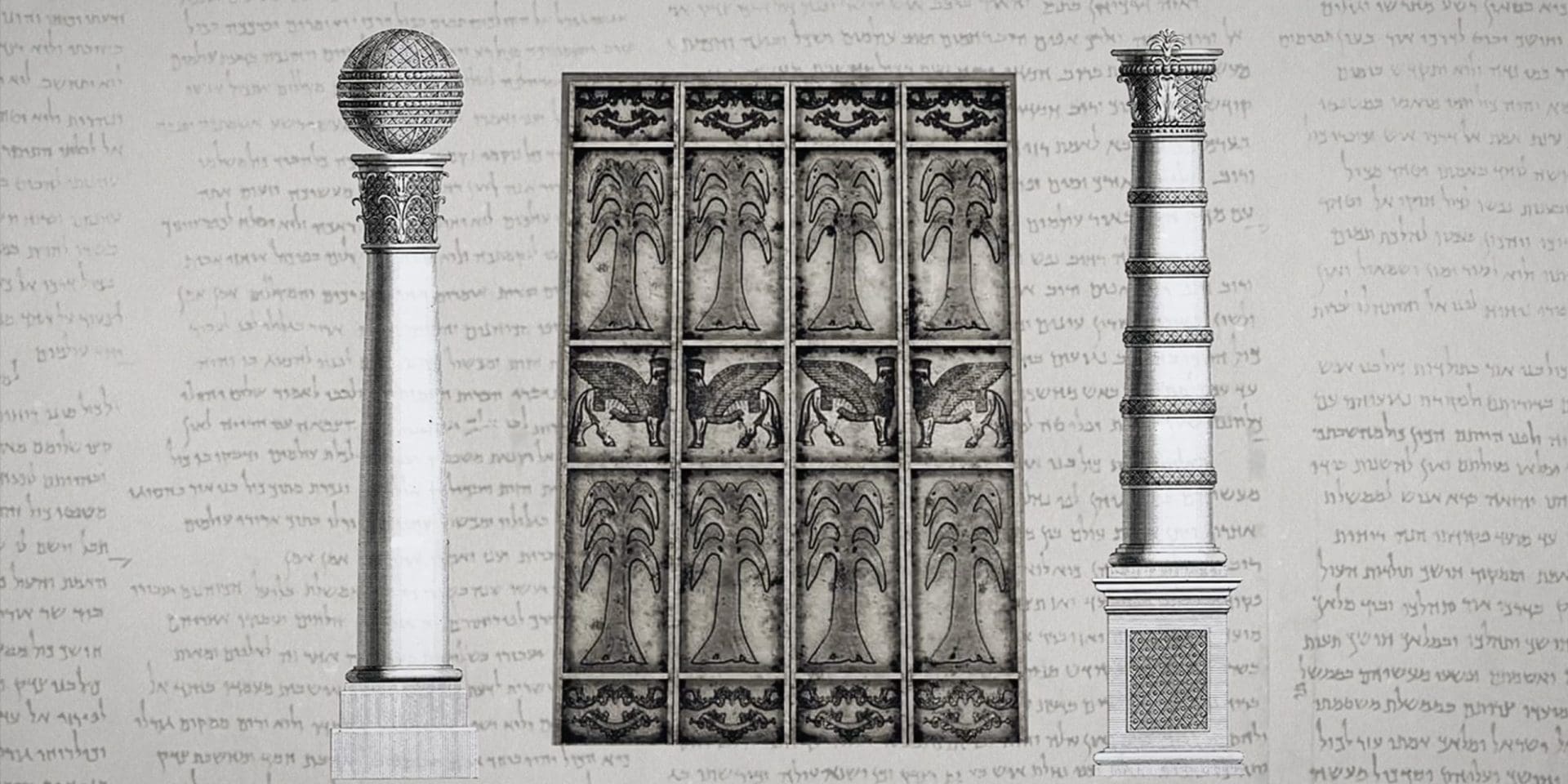As meeting places for God and men, ancient temples were created to reflect the ideal environment for such an event: the Garden of Eden, also called the “Garden of Plenty” or “Paradise” in surrounding cultures. The Jerusalem Temple, built by Solomon was no exception. The Bible gives a detailed description of Solomon’s Temple (1 Kings 6-7).
First, its location: Built just outside of the city of David, up on the highest point of the hilly territory that King David purchased from a man who was using it as a threshing floor (2 Samuel 24). Mountains seem to have always been associated with God, holiness, and a meeting place between man and God. Take for example the tradition that the Garden of Eden itself was on a mountain, the building of the artificial mountain that we have in the Tower of Babel (ziggurat) incident, and the giving of the Mosaic Law on Mt Sinai. The Temple’s mountain is also biblically associated with the Mt Moriah where generations earlier Abraham had nearly offered Isaac as a sacrifice (2 Chr. 3:1). Later non-Biblical tradition also rather doubtfully dubs it a place where Adam, Cain and Abel and Noah sacrificed.
“Mountains seem to have always been associated with God… Take for example the tradition that the Garden of Eden itself was on a mountain…”
It seems that the Temple itself was built and decorated to reflect the Garden of Eden. In front of it stood the bronze sea reservoir, and the ten bronze water carts decorated with lions and cattle. These likely symbolized the water of creation and the rivers that flowed through Eden to water it. In predictions of the future Temple of God the prophets (Ezekiel, Joel, Zechariah, and Revelation) all refer to a river of life that flows from it. Perhaps the lions and the cattle on the carts symbolized prey and predator living peacefully together as in Eden and the future temple. There were also two 25-foot-tall pillars with capitals shaped like lilies and were covered in hundreds of pomegranates, perhaps representing the two special trees in Eden. The doors to the temple were made of wood with gold overlay, and carved with cherubim, palm trees, flowers––all garden motifs found in Genesis. The inside floors and walls of the Temple were covered with wood paneling, and carved with vegetables and flowers continuing the natural, paradise theme. In Solomon’s Temple, the one lamp stand of the Tabernacle was replaced by ten lamp stands. If these were created in the same fashion, they were decorated to look like stylized Almond trees. The back wall of the Temple that separated the Holy of Holies from the rest of the Temple, and the Ark of the Covenant, which both seated and symbolized God’s presence, was decorated a bit differently with its cherubim, trees, and flower blossoms. Its door was also made from a special olive wood, carved with the same images, and covered in gold.
The idea of Gardens being holy places was widespread in the ancient near East. And its application was not limited to symbolism, building materials and carvings. Consider that the primary water source in Jerusalem was named the Gihon, which was one of the rivers flowing out of Eden. Ancient kings also had a habit of collecting trees from conquered or allied nations and planting elaborate gardens in their capital cities, palaces, and temples. In a palace in ancient Mari for instance, the courtyard before the throne room has multiple tree pits. In the middle of the room stood one artificial palm tree made of wood and decorated with gold and silver. As God is said to have planted the Garden of Eden, kings also took it upon themselves to be creators in their own right. Images of live potted trees being transported (hatshepsut) strikes a chord with careful Bible readers. Perhaps a similar practice occurred in the courts of Solomon’s temple (Psalm 52:8, Psalm 92:13-14, 1 Kings 4:32, Song of Solomon).

Corie Bobechko is a daily co-host, speaker, and writer of Bible Discovery. She also hosts a YouTube channel that shows how history and archaeology prove the Bible. Her heart for seekers and skeptics has led her to seek truth and share it with others. Corie also has a Bachelor of Theology from Canada Christian College.
• Hurowitz, Victor. “Inside Solomon’s Temple,” Bible Review 10.2 (1994): 24–25, 28, 30–37.
https://www.baslibrary.org/bible-review/10/2/10
• Hurowitz, Victor. “Solomon’s Temple in Context,” Biblical Archaeology Review 37.2 (2011): 46–57.
https://www.baslibrary.org/biblical-archaeology-review/37/2/7
• Stager, Lawrence E. “Jerusalem as Eden,” Biblical Archaeology Review 26.3 (2000): 36–39, 41–47.
https://www.baslibrary.org/biblical-archaeology-review/26/3/2







The recurring image of the pomegranates could be a direct or subtle reference to the Torah as this fruit has about 613 seeds to match the 613 mitzvot or laws of the Torah.